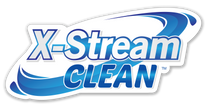Bacteria is everywhere; according to the National Center for Health Research, your desk can have 400 times more germs than your average toilet seat and 25,127 bacteria may live on your phone per square inch. Can you imagine how many live on your kitchen counter or in a public restroom?
Wiping your table off will help you de-germ it a bit, but how much does it really do? Cleaning a surface is a lot different than disinfecting or sanitizing it-- it’s important to know the difference to keep yourself and others as safe and healthy as possible.

CLEANING is your typical quick wipe-off; you might take a wet cloth (with or without soap) and scrub until it looks clean, or simply scrape the crumbs off your counter with your sleeve. Here you make something LOOK better and reduce your risk of infection, but you aren’t typically killing any germs-- just removing them from that surface and scooting them somewhere else.
DISINFECTING happens when you use chemicals on a surface, killing the germs present. It doesn’t exactly clean a surface, but it does get rid of the germs for good-- up to 99.999% of them. You often have to clean a surface before disinfecting it, removing all of the visible dirt before killing infectants.
**TIP: when disinfecting, read the instructions on your chemical disinfectants. Disinfection occurs when the surface is wet, so check to see how long surfaces should be saturated (this is called the dwell time). If your surface isn’t covered for the dwell time, it’s possible that you haven’t killed all of the pathogens present.
X-Stream Clean’s Volt Electrostatic Disinfectant Sprayers easily help with disinfection, using special electrostatic technology which positively charges the liquid inside the sprayer. This allows the spray to wrap around surfaces for a more seamless and quick disinfecting process-- it’s faster and offers better coverage than traditional disinfecting methods, and less product is wasted in the process.

The Microburst series also offers disinfecting and cleaning capabilities without the electrostatic feature, instead offering a long removable wand to get hard to reach areas so you can still get great use from the lower price-point option.

The Spotless Cleaning and Disinfectant Backpack Spray Mop offers a different kind of cleaning and disinfecting option, eliminating the need for mop buckets when it comes to floor cleaning. Instead, the Spotless™ has a backpack that will filter the disinfectant through to the floor with a pull of the mop’s trigger.

SANITIZING, according to the Centers for Disease Control and Prevention (CDC), occurs when cleaning or disinfecting a surface (or doing both), where the number of bacteria present on a surface are lowered to a “safe” level; this measure is based on public health standards and requirements. This means that safe levels will vary depending on where you are and what you are sanitizing-- offices and food preparation areas will have different standards.
Choosing between cleaning, disinfecting and sanitizing will depend on your goal. Cleaning is sufficient to make things look pretty or preparing a space for sanitization/disinfection, whereas sanitization is good when cleaning off food preparation areas (as the chemical treatment may be less harsh than disinfection), and disinfection is good for killing off all germs (bacteria and viruses) in high-touch areas and reducing the chance of illness.
A combination of these methods can lead to the safest and most effective results, keeping you and your loved ones in good health-- using X-Stream Clean sprayers and electrostatic technology will help you reach that point with ease.


